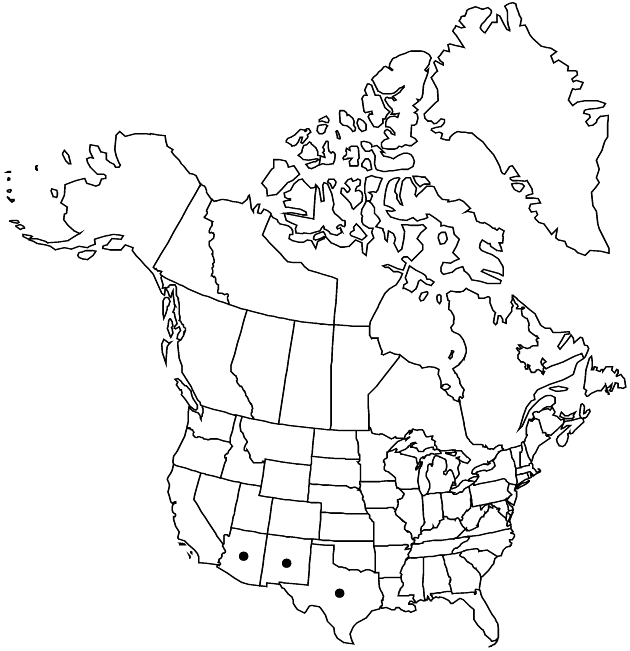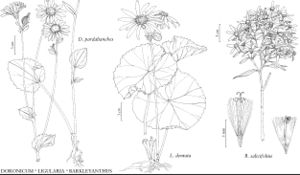Barkleyanthus salicifolius
Phytologia 27: 407. 1974.
Illustrated
Basionym: Cineraria salicifolia Kunth in A. von Humboldt et al., Nov. Gen. Sp. 4(fol.): 148. 1818; 4(qto.): 188. 1820
Synonyms: Senecio salignus de Candolle
Stems abundantly branched, arching distally. Leaves tapering to weakly defined petioles; blades 3–10(–15) × 0.5–1.5 cm. Heads (3–)8–16 in each array, arrays usually clustered. Phyllaries 4–6(–8) mm, tips green, obtuse. Ray corollas 8–12+ mm. Disc corollas (5–)7–8+ mm. Cypselae (1.5–)2–3 mm; pappi 5–6+ mm. 2n = 60.
Phenology: Flowering year-round, mostly spring.
Habitat: Open, rocky, disturbed sites
Elevation: 700–1500 m
Distribution
Loading map...

Ariz., N.Mex., Tex., Mexico, Central America.
Discussion
Barkleyanthus salicifolius is abundant and semiweedy through much of Mexico and northern Central America; it barely enters the flora area. The flowering heads are attractive and the species is sometimes cultivated.
Selected References
None.
Lower Taxa
None.
